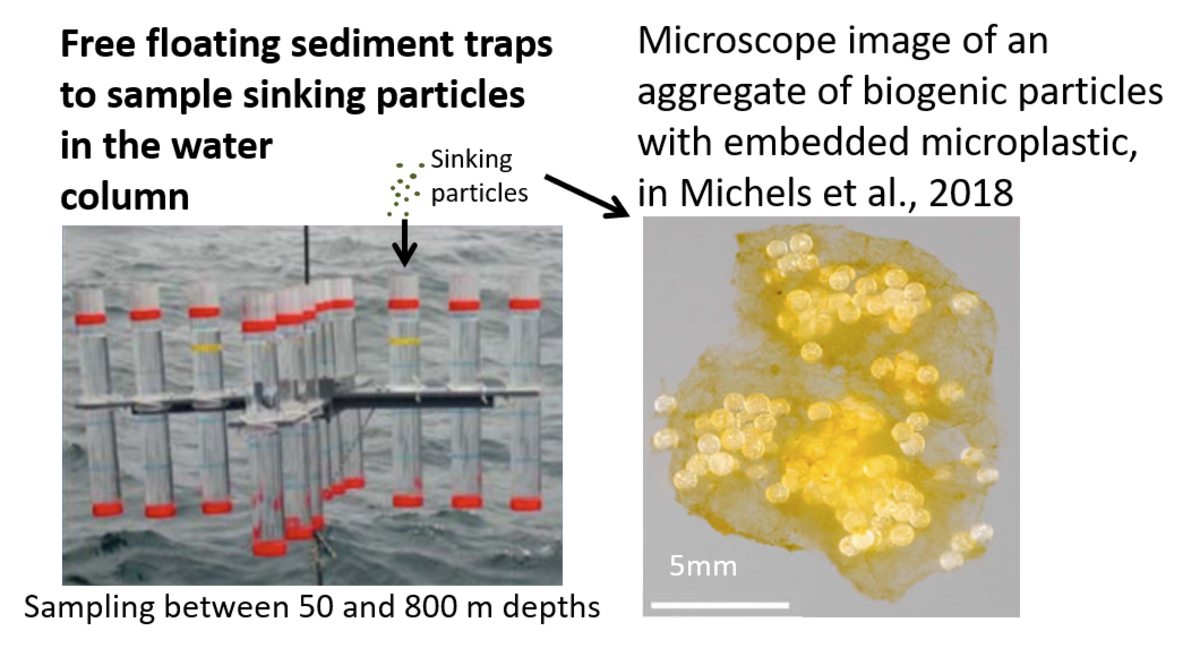To date, over 8300 MT (million metric tons) of plastic was produced worldwide with around 70% of those plastic already ended up in waste. 60% of the plastic waste was discarded in landfills and in the natural environment (Geyer et al., 2017) the main source for land-based marine plastic. Jambeck et al. (2015) estimated between 4.8 to 12.7 MT entering the oceans each year. However, the observed amount of plastic debris in the surface oceans is one order of magnitude lower than the amount of plastic entering the ocean each year (Eriksen et al., 2014). Furthermore, experiments with sediment traps deployed in different depth show that only few plastic pieces sink in the deep ocean much less than expected. The big question is “Where is all the plastic?”.
In FACTS, we will explore this question. Most plastic will not directly sink in the deep when it enters the ocean. The most common types of plastic are lighter than seawater, hence they can float and will cover long distances. During that voyage organic particles and microbes will attach to the plastic surface changing their buoyancy and causing their sinking impacting the natural particle flux and thus the carbon pump (the transport of CO2 into the deep that is fixed in organic material). However, these sinking particles are aggregates of plastic, organic material and microbes that are often out of all recognition as plastic, making it difficult to identify in sediment traps. In FACTS we want to understand in lab experiments how these aggregates will develop, which combinations of organic material (exopolymeric substances, EPS) and microbes will cause and accelerate the adherence of small plastic pieces and when these aggregates start to sink or fall apart. Furthermore, we want to compare these lab generated particles with particles collected in sediment traps deployed at different depth in different regions in the Northern European waters. We want to examine the collected particles in their composition and plastic content. These studies will help us, especially modelers, to understand how and when plastic vanish from the surface layer and where it will end up.



